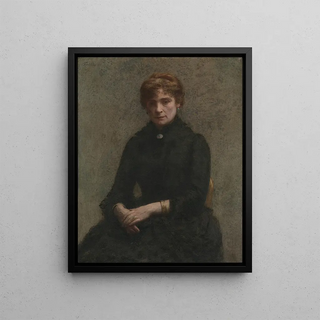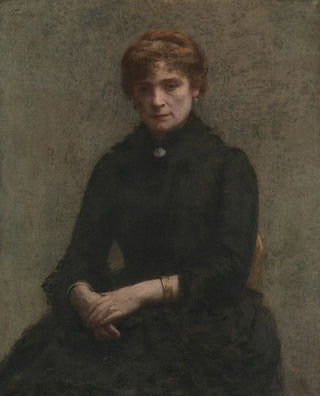Art print | Portrait of a woman - Henri Fantin-Latour


View from behind

Frame (optional)
Portrait of a Woman - Henri Fantin-Latour – Captivating Introduction
In the fascinating world of art, some works manage to transcend time and capture the very essence of humanity. "Portrait of a Woman" by Henri Fantin-Latour is one of those creations that, through its elegance and depth, invites the viewer to an introspective contemplation. This artwork, created in the 19th century, demonstrates exceptional craftsmanship and rare artistic sensitivity. Through this portrait, Fantin-Latour offers us a window into a bygone era, while evoking universal emotions that still resonate today.
Style and uniqueness of the work
Fantin-Latour's style is distinguished by its ability to blend realism with a subtle touch of romanticism. In "Portrait of a Woman," every detail is carefully observed and rendered, from the delicate features of the face to the nuances of light caressing the skin. The composition is harmonious, highlighting the female figure at the center, while incorporating decorative elements that enrich the visual narrative. The color palette, both soft and vibrant, helps create an intimate atmosphere, where the viewer feels invited to share a moment of intimacy with the protagonist. Fantin-Latour thus manages to bring his model to life, giving her an almost palpable presence, while revealing an aura of mystery that prompts curiosity.
The artist and his influence
Henri Fantin-Latour, an emblematic figure of the realist movement, established himself as a master of portraiture throughout his career. Born in 1836 in Grenoble, he was influenced by great masters of painting such as Delacroix and Courbet, but also drew inspiration from nature and everyday life. His ability to capture the human soul through portraiture made him a respected and admired artist, both by his contemporaries and subsequent generations. Fantin-Latour also played a key role in the development of Impressionism, collaborating with artists such as Monet and Renoir. His work paved the way for new artistic explorations, and his unique approach to portraiture continues to inspire

Matte finish

View from behind

Frame (optional)
Portrait of a Woman - Henri Fantin-Latour – Captivating Introduction
In the fascinating world of art, some works manage to transcend time and capture the very essence of humanity. "Portrait of a Woman" by Henri Fantin-Latour is one of those creations that, through its elegance and depth, invites the viewer to an introspective contemplation. This artwork, created in the 19th century, demonstrates exceptional craftsmanship and rare artistic sensitivity. Through this portrait, Fantin-Latour offers us a window into a bygone era, while evoking universal emotions that still resonate today.
Style and uniqueness of the work
Fantin-Latour's style is distinguished by its ability to blend realism with a subtle touch of romanticism. In "Portrait of a Woman," every detail is carefully observed and rendered, from the delicate features of the face to the nuances of light caressing the skin. The composition is harmonious, highlighting the female figure at the center, while incorporating decorative elements that enrich the visual narrative. The color palette, both soft and vibrant, helps create an intimate atmosphere, where the viewer feels invited to share a moment of intimacy with the protagonist. Fantin-Latour thus manages to bring his model to life, giving her an almost palpable presence, while revealing an aura of mystery that prompts curiosity.
The artist and his influence
Henri Fantin-Latour, an emblematic figure of the realist movement, established himself as a master of portraiture throughout his career. Born in 1836 in Grenoble, he was influenced by great masters of painting such as Delacroix and Courbet, but also drew inspiration from nature and everyday life. His ability to capture the human soul through portraiture made him a respected and admired artist, both by his contemporaries and subsequent generations. Fantin-Latour also played a key role in the development of Impressionism, collaborating with artists such as Monet and Renoir. His work paved the way for new artistic explorations, and his unique approach to portraiture continues to inspire






